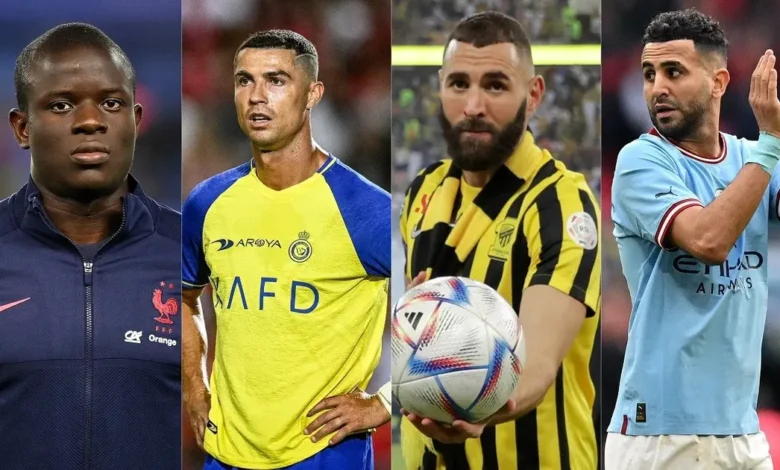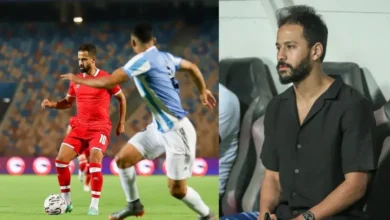Can Saudi Pro League become one of the world’s ‘top five’?

A room full of raised eyebrows greeted Cristiano Ronaldo’s assertion in September that Saudi Arabia will one day be home to one of the ‘top five’ leagues in world football. Indeed, Ronaldo was being a good marketeer, playing his role as an ambassador for Saudi football to perfection. After all, this division has historically attracted little global interest despite being home to Asia’s most successful club team ever – Al Hilal.
Even the most ardent Saudi Pro League supporter would likely feel Ronaldo’s suggestion is a little far-fetched. Still, a meteoric recent rise in popularity, stimulated by significant government investment and the arrival of some genuinely world-class players, means the Portuguese forward’s assertions deserve to be at least scrutinized.
On Friday, Al Hilal beat local rival Al-Nassr 3-0 in an entertaining Riyadh derby viewed in many countries worldwide for the first time – thanks to a recent global proliferation of broadcast rights. Saudi Pro League Chief Operating Officer Carlo Nohra hopes this is just the beginning, but also struck a cautious tone around the ‘top five’ narrative.

“The objectives that were set for us by the leadership of the country were to achieve a certain status for the league around the world,” Nohra said on the sidelines of the match in Riyadh.
“The support they’ve given us demonstrates their commitment, but from the outset, we were very clear that it’s going to take a while to get there,” he said.
Parallels with China
“We’ve heard this ‘top five’ before, but don’t look at a number. We simply want to be considered among the best leagues in the world. As long as we are doing what we set off to do, it should lead us towards the top of this ladder,” he added.
Parallels are often drawn between the Saudi Pro League’s recent rise and that of the Chinese Super League in the late 2000s. At that time, domestic football in China exploded as new clubs and owners splashed the cash on big European names. Oscar and Hulk swapped Chelsea and Zenit St Petersburg for Shanghai SIPG, while Paulinho and Jackson Martinez moved to Guangzhou Evergrande from Tottenham and FC Porto, respectively.
Big transfers and big salaries were the norm, with some rapid results. Led by legendary Italian manager Marcelo Lippi, Guangzhou Evergrande became the first Chinese club to win the AFC Champions League in 2013.
Two years later, with World Cup-winning coach Luiz Felipe Scolari at the helm, Guangzhou repeated the feat. China was tipped to bid for FIFA World Cup hosting rights, and all was rosy. Then, the bubble burst.
Chris Atkins, a FIFA football agent and former journalist who has worked extensively in China, recalls how things began to fall apart.
“I think the major difference currently between the two is obviously that Saudi investment is effectively direct government investment, whereas China was encouraging private enterprise to invest,” Atkins explained.
“The issue was that you attract attention once you are a high-profile entrepreneur in China. Many of those who invested in football have fallen foul with government investigations at some point,” he said. “At the time, there was an explosion in investment across sports and entertainment in China, but it was based on easy credit. Those financing club football began to fall away when that dried up.”
Despite the differences in approach between Saudi Arabia and China, Atkins says that the potential disruption of football’s status quo is a topic that will always get people talking.
Incredible Saudi resources
“The fear amongst the European establishment certainly feels similar now to how it did back then,” Atkins said. “As does the increasing reliance of clubs on big transfer fees when trying to offload players to the region,” Atkins said.
He further explained: “The big difference, I think, is that Saudi Arabia seems more willing to let the cash flow before seeing returns. The country has incredible resources, but even then, you have to question how long even the richest nations in the world are willing to incur losses without seeing any tangible progress. China would never afford its clubs that long, but I guess Saudi Arabia might.”
Saudi Pro League chief Nohra also feels that there are fundamental differences in the two countries’ football cultures. The former UAE Pro League CEO, who most recently worked as Vice President and General Manager at WWE Asia-Pacific, also outlined his desire for the Kingdom’s elite division to focus on forging its path.
“There is a great football culture here already,” Nohra stressed.
‘Distinctly different from China’
“Eighty percent of the population of Saudi Arabia is involved in football in some shape or form, making it distinctly different from China. This is a real product. Football has existed in this country for a long time, the league has existed here for 50 years,” he told Al Arabiya English.
“But what is critically important to us is the support we have to deliver on our promise to Saudi Arabia’s leadership – and deliver sustainably. Of course, we’ll have to rectify and adjust as we go along to see what works and what doesn’t,” Nohra said.
“We want to try new and innovative things – it’s not about cookie cutting and doing what others have done. Who knows how things will evolve? It’s a great opportunity for the Saudi Pro League to be leaders.”










